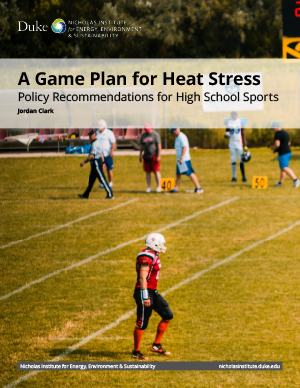Publications
A Game Plan for Heat Stress: Policy Recommendations for High School Sports
High school athletic associations (HSAAs) bear the responsibility of ensuring the health and safety of student-athletes. Exertional heat illness poses a significant risk, making this a task of increasing urgency in light of climate change and rising temperatures. This policy brief builds on prior research to offer recommendations to HSAAs as part of an ongoing commitment to safeguard student-athletes from heat-related illnesses.
Defining Extreme Heat as a Hazard: A Review of Current State Hazard Mitigation Plans
US states must have a FEMA-approved state hazard mitigation plan (SHMP) to apply for certain nonemergency disaster funds and funding for mitigation projects. SHMPs indentify the hazards that may impact a state and detail corresponding mitigation strategies. This report assesses the treatment and definition of heat as a hazard in each state's most recent plan. The importance of extreme heat—the leading cause of weather-related death in the United States—is often understated because it does not fit easily into current SHMP guidelines. The authors provide recommendations to help states adequately evaluate the threat of extreme heat as they update their SHMPs.
The Impact of Heat Exposure on Reduced Gestational Age in Pregnant Women in North Carolina, 2011–2015
Heat stress poses serious health risks to maternal health, including an increased probability of preterm labor and preterm birth. Yet the Southeastern US, where extreme heat exposure is high and maternal outcomes are some of the most challenging in the nation, has seen insufficient research and action on this issue. This study reveals significant impacts to pregnant women exposed to heat over a 5-year period during North Carolina’s annual warm season (May–September).



